Cucumber Rodnichok - mid-season variety with tasty fruits
Cucumber Rodnichok is a mid-season hybrid, 50-55 days pass from planting to harvesting. He was taken out in the Transnistrian Research Institute of Agriculture. It can be grown both in the greenhouse and in the open field. In the greenhouse, up to 25 kg of fruits are harvested from 1 m2, and from an open area up to 7 kg.
Content:
- Features of the structure of plants and fruits
- Soil preparation, seed preparation and planting
- Planting and caring for cucumbers in the greenhouse
- Outdoor cucumber care tips
- Diseases and pests
Features of the structure of plants and fruits
Bushes cucumbers grow up to 3 m in height, while the main lash is up to 2.8-3 m long, 4-5 lateral shoots are formed on it. The fruits are green, they have small tubercles. Cucumbers grow up to 12 cm in length, they are cylindrical in shape and have a clean, even surface, their diameter is 3.5-4 cm. Fruits weigh about 90-100 g. The flesh is crunchy, no bitterness is felt in it. Tasting assessment of cucumbers - 4.6-5 points.
The advantages of the variety:
- Cucumbers have a high taste. They can be eaten fresh and can also be used for canning.
- Plants are resistant to diseases: powdery mildew, anthracosis, bacteriosis, cladosporiosis, downy mildew.
- The variety tolerates heat well.
- Has a long fruiting period.
- Fruits are of good presentation, even and clean.
Soil preparation, seed preparation and planting
When digging land in the fall, add on 1 m2:
- rotted manure bucket
- 300 g dolomite flour
- embed fertilizers to a depth of 10 cm
In the spring, a week before planting, you need to dig up the soil again and add to it:
- 20-25 g of ammonium nitrate
- 20 g K? SO? (potassium sulfate)
- 20-25 g superphosphate
Next, spill the soil with a warm solution of potassium permanganate. Cover the ground with clear film. Remove it just before planting.
Soak cucumber seeds Spring F1 for 2-3 days in water.
Then, before planting, place it in a solution of the Ecopin biostimulator for 3 hours. Spill the bed well with a potassium permanganate solution at a temperature of 60 ° C. Sow the seeds, observing an indent of 20 cm, plant them to a depth of 2 cm.
Planting and caring for cucumbers in the greenhouse
In the fall, it is necessary to collect and burn the remains of tops, debris and dig up the soil. Then make a 3% bleach solution and process wood, glass, metal parts. Nitrogen is added under the cucumbers when the leaves and shoots grow. When the cucumbers bloom, phosphorus is added. And when the ovaries are formed, nitrogen and potassium are added. It is best to feed in a greenhouse with fertilizers dissolved in water and use a small amount of fertilizers.
Do the first top dressing when the cucumbers grow 3-4 leaves. Pour into a bucket of water (10 l):
- 10-15 g of ammonium nitrate
- 20-25 g superphosphate
- 15-20 g K? SO? (potassium sulfate)
- Watering rate - a bucket of solution for 10-15 cucumber bushes
Perform the second feeding after 2 weeks, when the cucumbers Fontane will bloom and form ovaries. This time is best suited organic fertilizers: manure, chicken droppings... Add to a bucket of liquid fertilizer:
- 1 glass of ash
- 5-10 g of nitrophoska;
- 0.5 g boric acid
- 0.3 g manganese sulfate
Pour 3 liters of fertilizer solution on 1 m2 of soil.Instead of this top dressing, you can use mineral fertilizers, but then you need to add more potassium and less nitrogen. Apply the fertilizer for the third time after 2 weeks. Make slurry, add only 2.5 tablespoons to a bucket of water. spoons of manure. Feed the plants for the fourth time after another 2 weeks with a similar solution.
After each feeding, water the cucumbers thoroughly.
To spray the leaves on a bucket of water (10 L), add:
- 0.1 g zinc salt of sulfuric acid
- 1 g orthoboric acid
- 30 g potassium nitrate
- 60 g of simple mineral phosphate fertilizer - superphosphate
- 0.4 g manganese sulfate
- 150 g urea
Cucumbers The fontanelle needs to be watered regularly. But do not overmoisten the ground in the greenhouse, due to the fact that this will violate its air permeability. Before bud formation begins, cucumbers need to be watered moderately, using 4-5 liters of water per 1 m2, since at this time it is impossible for cucumbers to actively grow foliage, but it is necessary to form as many buds as possible. When buds appear and bloom, they are watered once every 2-3 days, using 9-10 liters of water per 1 m2. After the spring cucumbers have faded, they are watered every other day. For glaze warm water is suitable, as cold water can damage the roots. Also, because of this, you should not water the plants at the root. Therefore, furrows are dug and water is poured into them. If it's hot, then you can spray the glass of the greenhouse outside with a solution of chalk, and also spray the cucumber leaves with warm water (20 ° C).
Outdoor cucumber care tips
In order for cucumbers to bring a large harvest, they must be properly looked after:
- Watering. Cucumbers should not be watered with cold water and root. Dig a small groove near the bed and pour warm water into it. Water the cucumbers depending on the drying out of the soil.
- Fertilizers. The first time they are fed when the ovaries of cucumbers are formed. You can use liquid manure or chicken droppings, but if these fertilizers are not available, then buy the Sudarushka Cucumber fertilizer. Dissolve 1 teaspoon of the composition in a bucket of water (10 l) and pour mulch on top. Then slightly loosen the soil near the bushes, so as not to damage the roots, since they are very close to the soil surface.
- Garter. When the cucumber lashes grow and lie on the ground, then carefully wrap the stem under the first leaves with twine, you cannot pull it tightly, then tie the twine to the crossbar. Then guide the stem of the cucumber slightly along the twine.
- Topping. Watch the side stems and pinch when they grow to 50-60 cm. When the main stem grows 30-40 cm behind the bar, then pinch it as well.
Diseases and pests
Common diseases of cucumbers:
- Powdery mildew. With it, small white spots appear on the upper part of the leaves, they then spread throughout the plant. After the lashes turn brown and fall off. The disease appears with too frequent watering, a lot weeds... If you notice powdery mildew, then tear off and burn the diseased parts of the plant. Process the bush with 25-30 g of ground sulfur powder per 10 m2. You can spray the bushes with liquid manure.
- Peronosporosis. In case of illness, you can find greenish-yellow spots on the upper parts of the leaves that have a faded green bloom. Then the spots grow and form a purple bloom on the bottom of the leaves. To prevent the disease from hitting the cucumbers, they need to be treated with potassium permanganate before planting, and watered only with warm water. In case of illness, you can treat cucumbers with a solution of Bordeaux mixture.
- Anthracnose. With a disease, there are yellow-brown spots on the leaves, after which a pinkish bloom forms on the bushes. The affected bushes are treated with a Bordeaux mixture, this is done 4-5 days before harvesting the fruits at intervals of a week.
- White rot. With illness, mucus and white bloom appear on the bushes. To fight the disease, you need to carefully cut off the damaged parts and burn them.After disinfecting the greenhouse or garden bed, feed the plants with a solution from a bucket of water, 2 g of copper sulfate, 10 g of urea. Solution consumption - 1 liter per 10 m2.
- Root rot. It arises from the use of substandard seed, sowing them in too cold soil, due to watering with cold water, when planting in the ground without fertilizers. In case of a disease, it is required to excavate the roots and process them with chalk, sand or fresh sawdust, peat, and remove the affected roots. Slices need to be powdered ash, powder the earth, pouring 200 g of dry bleach on 10 m2.
- Cladosporium. With disease, many watery spots are visible on the fruits, they grow and harden. For prevention, treat the bushes with a 15% solution of Bordeaux mixture.
More information can be found in the video:
Cucumber pests and control:
- Melon aphid. They are tiny insects. To prevent them from appearing, you need to remove the tops from the site, dig up the soil and decontaminate her. When aphids spread, it is required to spray the bushes with a solution of grass. Pour 1 kg of grass into a bucket of water, leave for a day and then you can use the composition. You can spray by making a solution from a bucket of water (10 L), a glass of ash, 50 g of green soap. If aphids very much, then the plants are sprayed with Inta-Vir.
- Spider mite. It is a small greenish-red insect that sucks juices. It is good to spray the affected plants with an infusion of 200 g garlic or Luke on a bucket of water. Do this 4-5 times per season. You can plant near Dillwhen it blooms, it will attract ladybugs, which deal with many species pests.
- Ants. You can use bottles of sweet syrup to fight the ants. Fill the ant nests with kerosene. You can also dust the ground with slaked lime or ash.
- Slugs. Sprinkle the ground with ash to scare away slugs or slaked lime, constantly dig up the ground. You can also treat it with Metaldehyde.
- Whitefly. To fight, you can plant tobacco around the perimeter of the garden. With a large accumulation of pests, the bushes are treated with Inta-Vir.
Cucumbers are plucked carefully, while the whips should not be lifted. All fruits are harvested that are normal size. Cucumbers are harvested more often in hot weather than in rain. It is best to harvest the fruits in the morning or in the evening every other day.



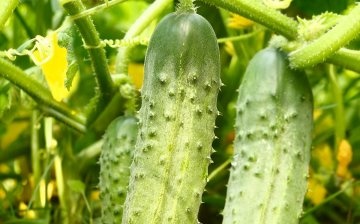
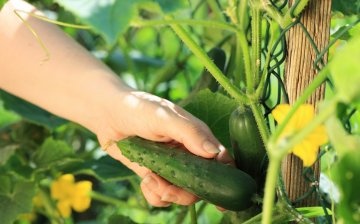
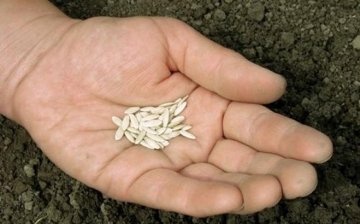
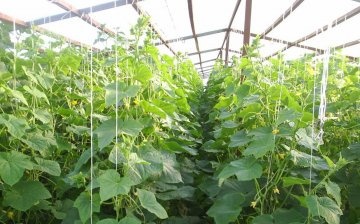
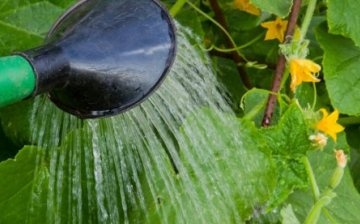







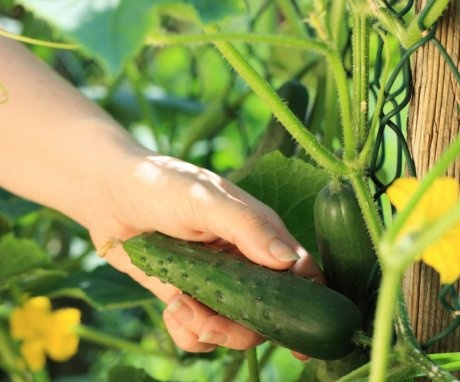
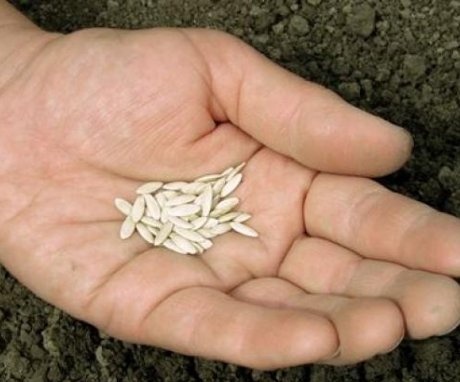
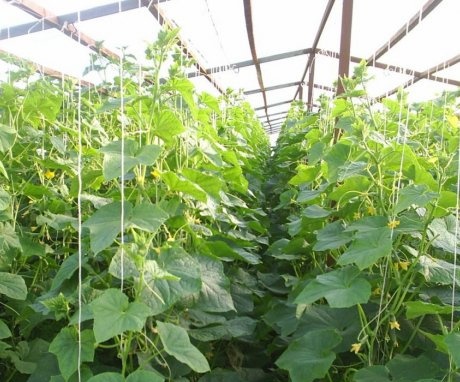
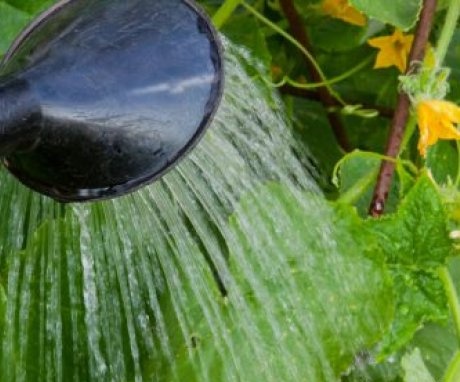
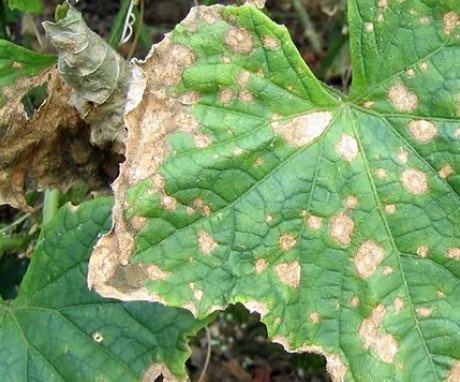
Cucumbers need to be periodically treated for diseases with the biological agent Fitosporin. During the heat, you can shade the cucumbers with a special net. If you fertilize this vegetable with mineral fertilizers, then the acidity of the soil will increase, therefore, ash will need to be added to it.